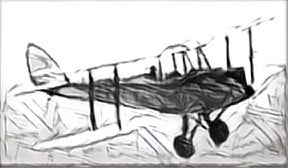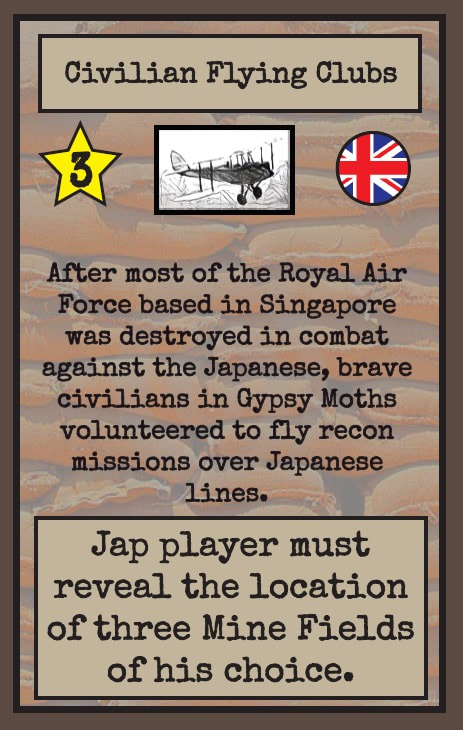Civilian Flying Clubs
A gypsy moth, typical of the kind of planes used by civilian flying clubs in 1941.
By the Battle of Singapore, most of the Royal Air Force in Malaya had either been destroyed or withdrawn to safer airfields elsewhere. As such, there were insufficient planes to provide useful airborne reconnaissance information to British military authorities. When word of this got out, some civilians belonging to local flying clubs bravely volunteered to fly their own planes to gather information about Japanese troop movements, despite the risk of being shot down.
References:
Sinister Twilight, Noel Barber, 1968
The War Against Japan Vol.1, Maj-General S Woodburn Kirby, 1957
On the Psychology of Military Incompetence, Norman Dixon, 1976
History of the Second World War, B.H. Liddell Hart, 1971
The Fall of Singapore, Justin Corfield and Robin Corfield, 2012
References:
Sinister Twilight, Noel Barber, 1968
The War Against Japan Vol.1, Maj-General S Woodburn Kirby, 1957
On the Psychology of Military Incompetence, Norman Dixon, 1976
History of the Second World War, B.H. Liddell Hart, 1971
The Fall of Singapore, Justin Corfield and Robin Corfield, 2012
Card: Commonwealth
Supply cost: 3
Game effect: When played, the Japanese player must reveal the location of any three Mine Fields, of his choice, to the Commonwealth player. These can include Mine Fields that have already been revealed. If the Japanese player has less than three Mine Fields still in the game, he has to reveal all of them.
Supply cost: 3
Game effect: When played, the Japanese player must reveal the location of any three Mine Fields, of his choice, to the Commonwealth player. These can include Mine Fields that have already been revealed. If the Japanese player has less than three Mine Fields still in the game, he has to reveal all of them.


